Rosemary Gilliat Eaton (1919, Hove, England–2004, Cole Harbour, Nova Scotia)
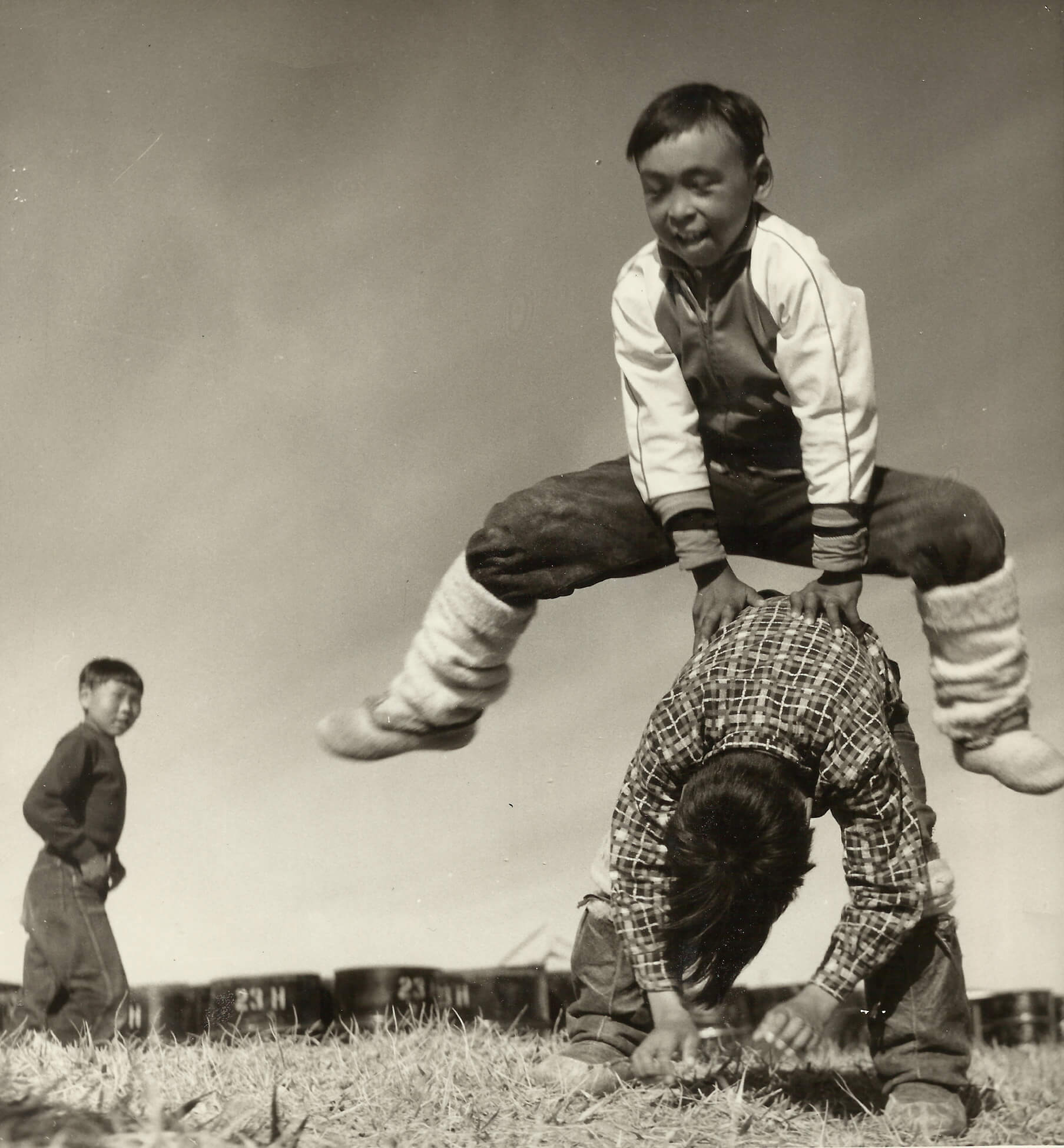
Inuit Children Playing ‘Leap frog,’ Qikiqtaaluk Region, Nunavut, c.1962
Cole Harbour Rural Heritage Society
One of thousands of photographs that Rosemary Gilliat Eaton (1919–2004) took as a photojournalist, this image of Inuit boys playing leapfrog has taken on particular significance in recent years thanks to the work of Plains Cree writer and curator Paul Seesequasis. After his mother testified at the Truth and Reconciliation Commission, she encouraged Seesequasis to search for photographs that represented the strength of Indigenous communities and the joys of daily life. Seesequasis came across the leapfrog photograph in that search and was particularly struck by how the low and close vantage point of the composition captures the boy’s sense of lightness and delight in his acrobatics. Seesequasis’s appreciation of Gilliat Eaton’s “sensitive lens” ensured that her work was prominently featured in a collection of photographs he compiled, exhibited, and published, drawing new attention to her career and her remarkable achievements in mid-century documentary photography.1
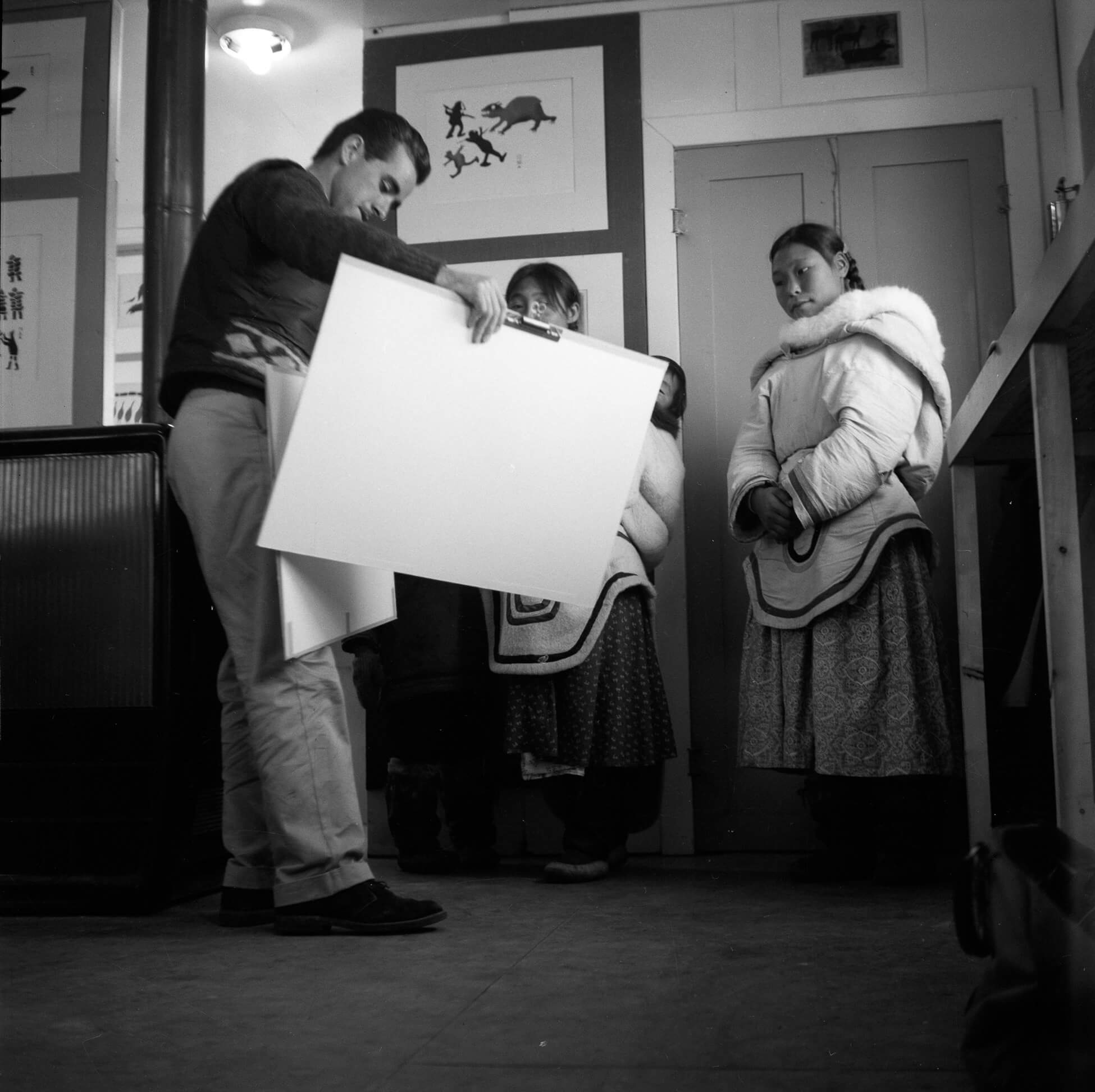
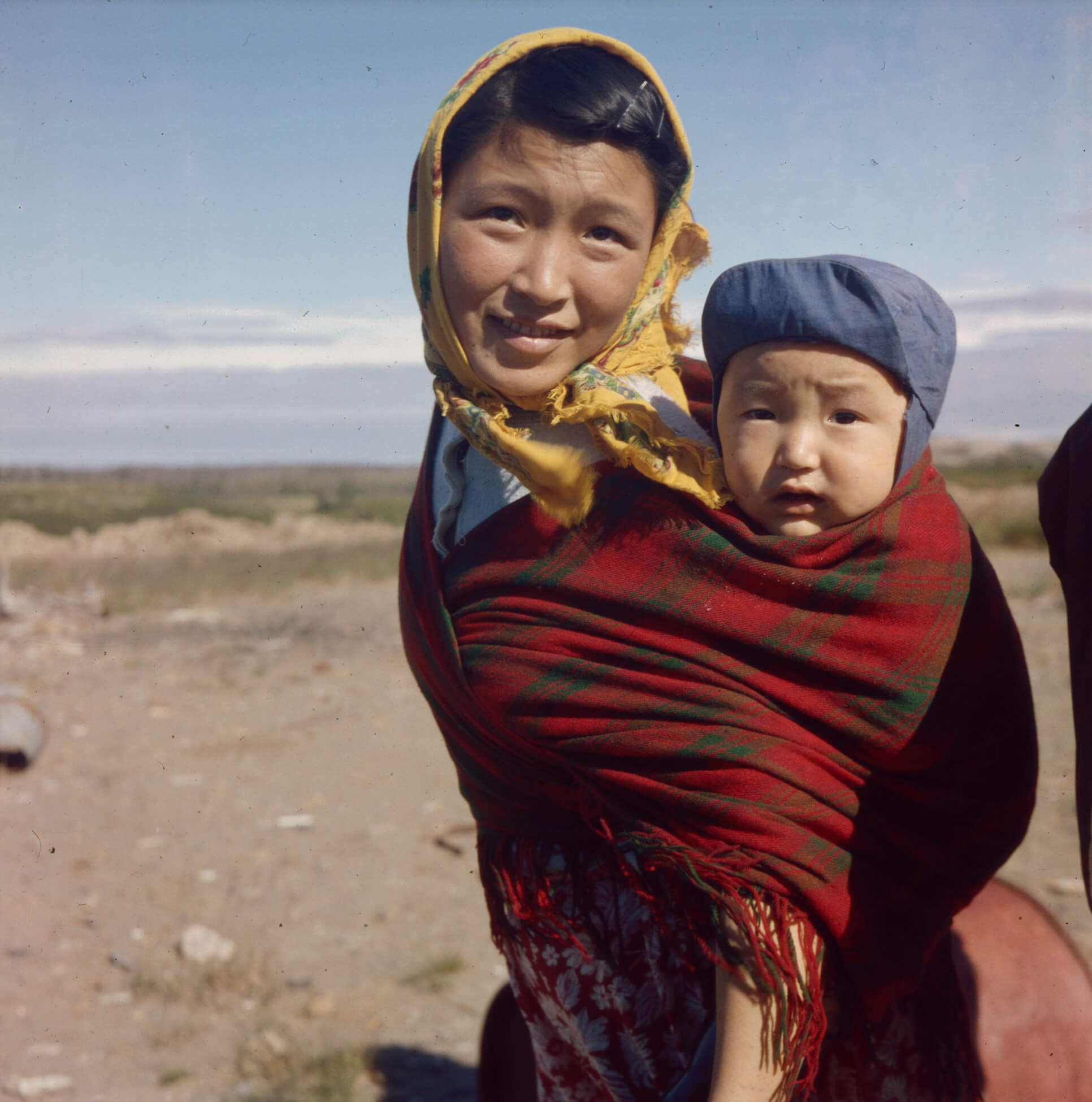
Raised largely on her family’s tea plantation in Sri Lanka, Gilliat Eaton attended boarding school in Switzerland. She pursued professional photography in London, where she apprenticed with British photographer Bill Brandt (1904–1983) while freelancing for newspapers and book publishers. In 1952, she immigrated to Canada on her own, an unusual choice for a single woman at the time.
Once she had settled in Ottawa, Gilliat Eaton sought assignments that enabled her to travel and document the geographic and social diversity of the country, with a particular focus on the North.2 She illustrated stories for Maclean’s, Star Weekly, and Canadian Geographic, but it was the Beaver magazine (now Canada’s History) and the National Film Board that supported most of her Northern work.3 She took numerous photographs of people she met in the North, including images of artists working in Kinngait (Cape Dorset). Gilliat Eaton’s working method was unhurried and she sought subjects who were willing to engage with her in building connection and trust.
Although best known for her photojournalism, Eaton also produced remarkable photographs of a cross-country car-camping trip she took with three friends in 1954 and contributed photographs to conservation efforts in Gatineau Park in Quebec, where she spent weekends for a decade—the striking close-up of Dorothy Stotesbury and a chickadee, c.1958, was taken in the area.4 Gilliat Eaton largely set aside her freelance work when she settled in Nova Scotia in 1965. While living in Cole Harbour she became deeply involved in efforts to protect the local saltmarsh and farmland and began researching and writing about the local environment as well as photographing local family albums to build up a historical record of the community.
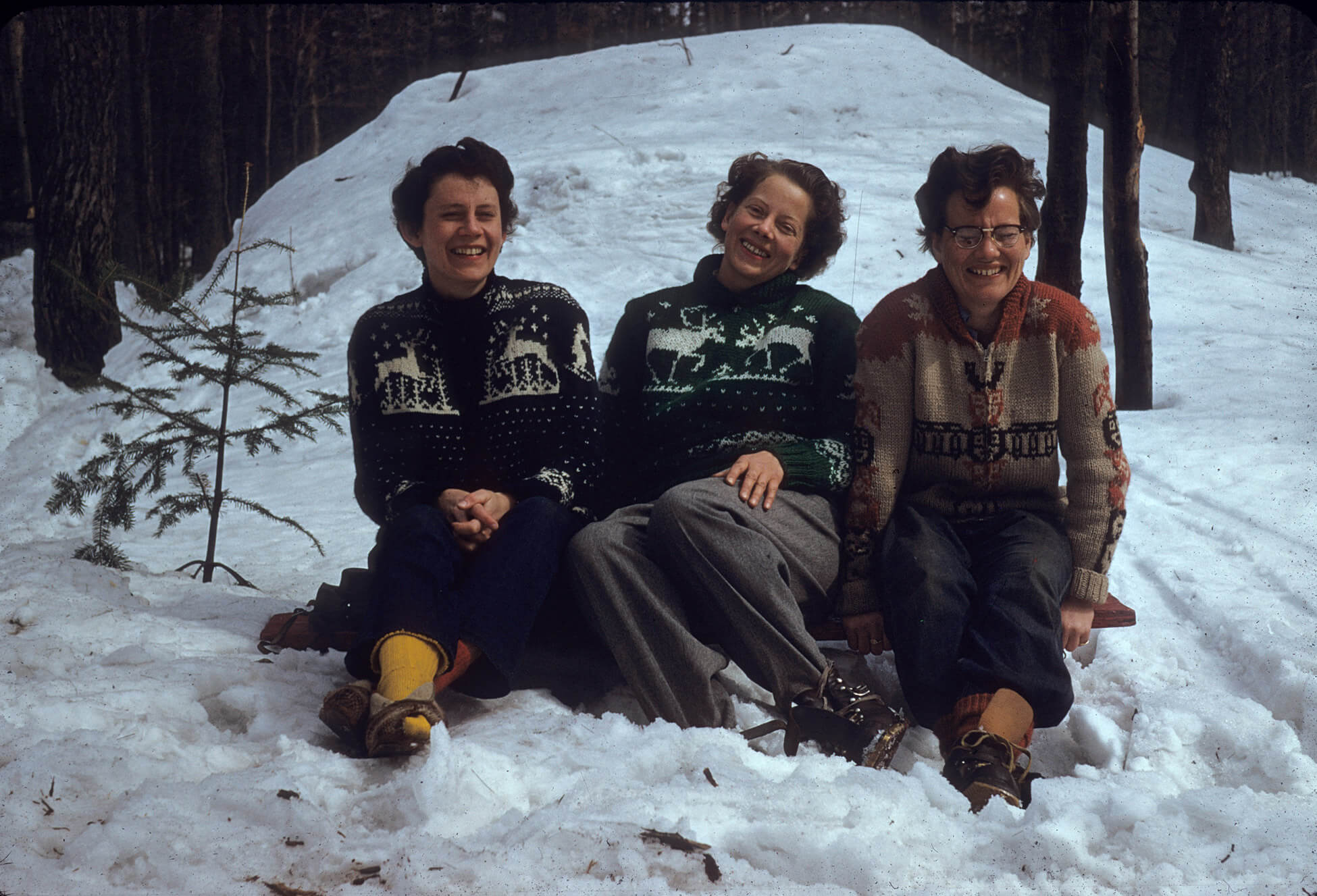
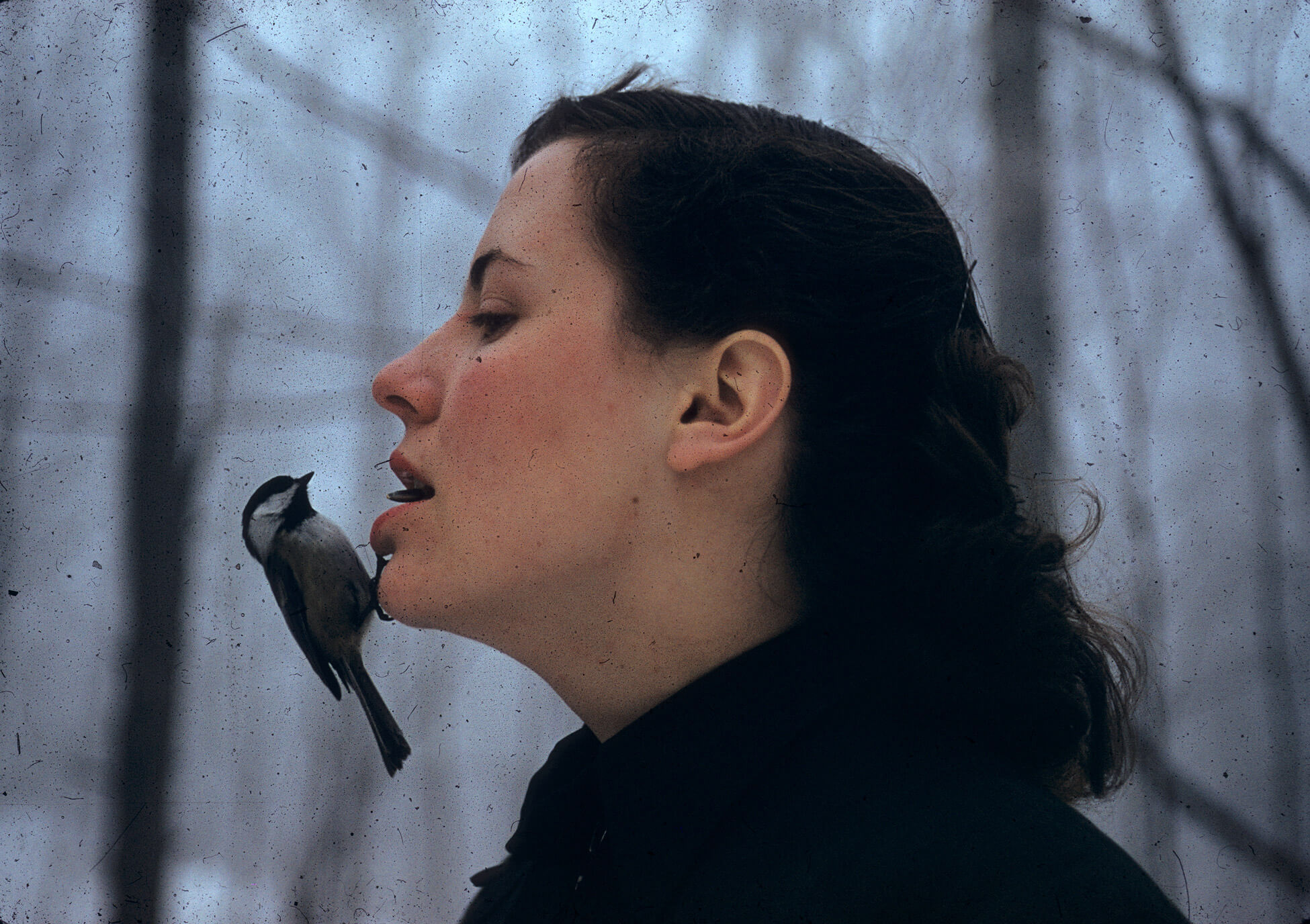

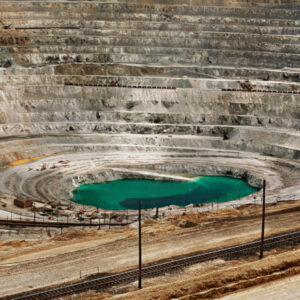 About the Authors
About the Authors
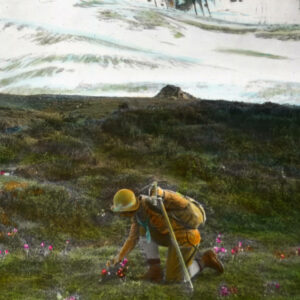 More Online Art Books
More Online Art Books
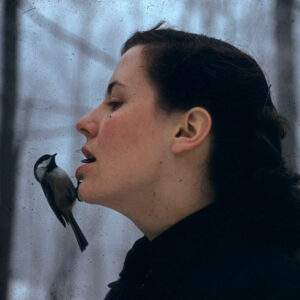 Acknowledgements
Acknowledgements